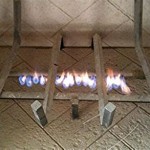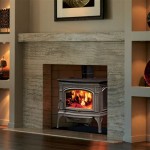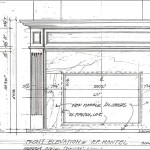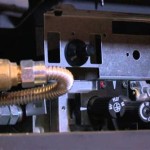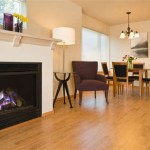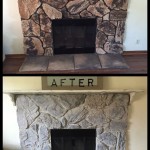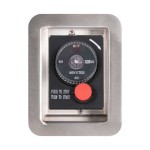Cost To Add A Wood Burning Fireplace To An Existing Home
Adding a wood-burning fireplace to an existing home can significantly enhance its ambiance, value, and heating capabilities. However, this home improvement project involves numerous factors that influence the overall cost. Understanding these factors is crucial for homeowners considering this endeavor to make informed decisions and budget effectively.
The cost of installing a wood-burning fireplace in an existing home is generally more expensive than adding one during new construction. This is primarily due to the complexities of integrating the fireplace and chimney system into an existing structure, which often requires modifications to structural components, electrical wiring, and existing HVAC systems. The national average cost can range from $3,000 to $10,000 or more, depending on various project-specific considerations. This figure provides a general estimate, and actual costs may vary significantly based on location, design choices, and the extent of the modifications required.
Key Cost Factors: Fireplace Type and Installation
The type of wood-burning fireplace selected significantly impacts the overall cost. Options range from prefabricated units to custom-built masonry fireplaces. Prefabricated fireplaces, generally made of metal, are typically less expensive to install and require fewer on-site construction hours. They are designed for easier installation and are often a suitable choice for homeowners seeking a more budget-friendly option. These units often come as complete packages, including the firebox, chimney components, and necessary hardware.
In contrast, custom-built masonry fireplaces represent a more substantial investment. Constructed from brick, stone, or other masonry materials, these fireplaces offer greater design flexibility and aesthetic appeal. However, the construction process is labor-intensive, requiring the expertise of skilled masons. This translates to higher material and labor costs. Additionally, masonry fireplaces often require a larger footprint, potentially necessitating structural modifications to the home. The cost of materials such as brick, stone, mortar, and firebrick also contributes to the higher overall price.
The installation process itself contributes significantly to the overall expense. This encompasses structural modifications, framing, chimney construction, hearth installation, and finishing work. If the existing home's structure requires significant alteration to accommodate the fireplace and chimney, the cost will increase accordingly. This may involve reinforcing floors, walls, or the roof to bear the weight of the fireplace and chimney system. Furthermore, ensuring proper ventilation and adherence to local building codes is paramount, which may necessitate additional expense for permits and inspections.
Chimney Construction and Ventilation
A properly functioning chimney is essential for safe and efficient operation of a wood-burning fireplace. The chimney serves to vent combustion gases and smoke away from the home. The cost of chimney construction is a significant component of the overall project budget. The height, material, and placement of the chimney all influence its cost. A taller chimney may be required to ensure adequate draft, which can add to the material and labor costs.
Chimney materials range from prefabricated metal chimney systems to traditional masonry chimneys. Prefabricated metal chimneys are generally less expensive and easier to install than masonry chimneys. They are often a suitable choice for prefabricated fireplaces. However, masonry chimneys offer a more traditional aesthetic and can be more durable in the long run.
Proper ventilation is crucial for safe and efficient fireplace operation. The installation must comply with local building codes regarding ventilation requirements. This may involve installing a fresh air intake to provide combustion air to the fireplace, preventing negative pressure within the home and potential backdrafting of smoke and gases. Adequate ventilation also helps to ensure efficient burning of wood and reduces the risk of carbon monoxide buildup.
Permits, Inspections, and Professional Labor
Obtaining the necessary permits and inspections is a critical aspect of the fireplace installation process. Building codes vary depending on location, and compliance is essential to ensure safety and prevent future legal issues. The cost of permits can range from a few hundred to several thousand dollars, depending on the complexity of the project and local regulations. Inspections are typically required at various stages of the installation to verify compliance with building codes.
Engaging qualified and experienced professionals is highly recommended for fireplace installation. This includes contractors, masons, and chimney specialists. While DIY installation may seem appealing to reduce costs, it is crucial to recognize the complexities and potential safety risks involved. Improper installation can lead to fire hazards, carbon monoxide poisoning, and structural damage to the home. Hiring licensed and insured professionals ensures that the work is performed to code and that any potential issues are addressed properly.
The cost of professional labor can vary depending on the scope of the project, the location, and the experience of the contractors. It is advisable to obtain multiple quotes from different contractors to compare pricing and services. When evaluating quotes, consider factors such as the contractor's reputation, experience, insurance coverage, and warranty offered on their work.
Furthermore, consider the cost of finishing work around the fireplace. This may include installing a hearth, facing the fireplace with stone or brick, and painting or finishing the surrounding walls. These aesthetic enhancements can add to the overall cost but can also significantly enhance the visual appeal of the fireplace area.
Ultimately, the cost of adding a wood-burning fireplace to an existing home is a multifaceted consideration, encompassing fireplace type, installation complexity, chimney construction, ventilation requirements, permit fees, and professional labor costs. Thorough research and careful planning are necessary to ensure a successful and cost-effective project.

What Does It Cost To Install A Fireplace Vs Wood Stove Stamford Fireplaces

What S The Average Fireplace Installation Cost

Adding A Fireplace To Existing Home Where For Fireplaces

Fireplace Installation Cost 2024 Gas Wood Burning Electric

Estimated Page Fireplaces Stoves Inserts Wood Gas Pellet

Estimated Page Fireplaces Stoves Inserts Wood Gas Pellet

How Much Does Fireplace Installation Cost 2024 Data Angi

Wood Stove Installation Cost In 2024 Forbes Home

How Much Does It Cost To Install A Fireplace In

Estimated Page Fireplaces Stoves Inserts Wood Gas Pellet
Related Posts

